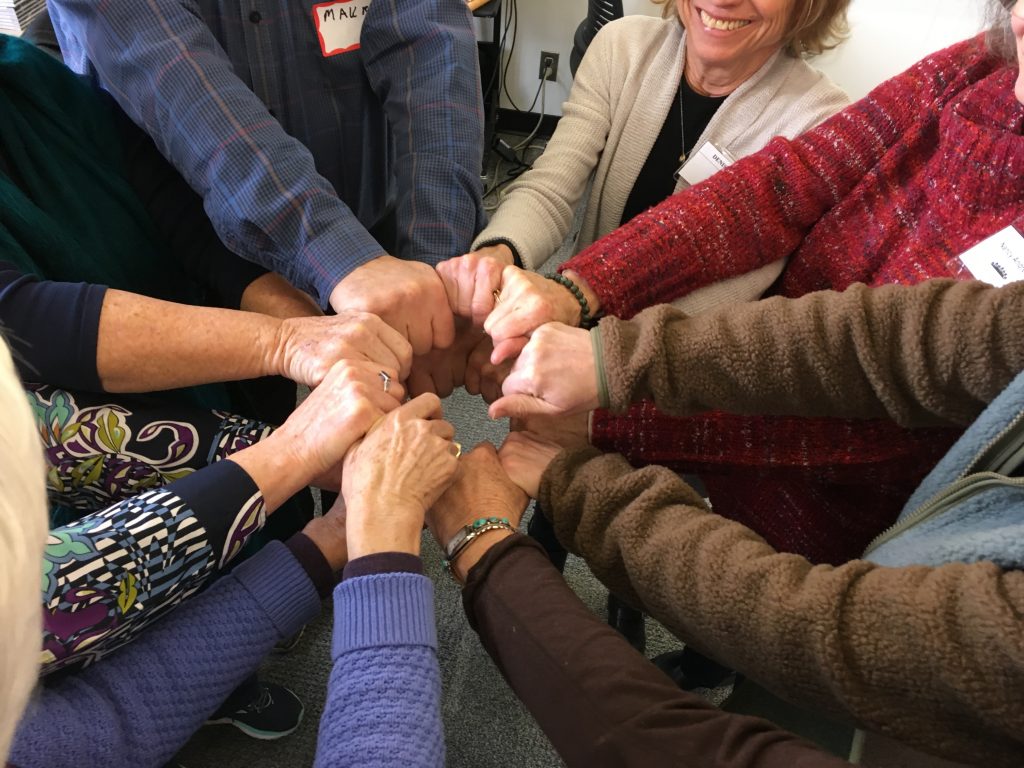Getting from “Gotta Have” to “Community First”

Cohousing community members begin with some basic assumptions. We expect to do some downsizing.
We know we will be sharing space and will need to make some comprises about how we use that space. We plan to reduce our impact on the planet and increase our social connections. These tend to be shared assumptions and overall, all these things happen in every cohousing community.
Then there are the less shared assumptions, and there tend to be a lot of these. One person visits a community with a large common workshop and assumes their not-yet-built community will have the same.
Another reads about an accessible community and assumes that their unit will be single level. There are assumptions about gardens and shared utilities, private back yards and affordability, and on and on. In short, as people make the decision to join a cohousing community, each as a list of “requirements” that will make cohousing work for them.
The interesting thing about these requirements is not so much that they exist, or what they are, but how they change over time, in particular over time spent in community. We all know before we start that a smaller house is better for the planet, but we tend to have a limit on how small we think we can go. We look forward to sharing more and buying less, but we tend to be more comfortable sharing our stuff than getting rid of it and relying on others sharing theirs.
A lot of the ideals of cohousing sound good, but the reality is that we have to grow into the full potential of this way of life. Downsizing, shedding material objects, and becoming more dependent on neighbors can all feel like sacrifice at the beginning. Full realization of the joy and abundance of cohousing comes later.
The challenge in this is that an awful lot of decisions that relate to sustainability and affordability come sooner. We’re still early in the development process when we decide how much house we are going to build, how many cars we are going to plan parking for, and even how much land to buy.
So what makes people shift their thinking over time? I believe it is the lived experience of relationship. As communities gather and get to know each other, the value of the community increases and the relative value of individuality, certain aspects of individual homes and one’s particular preferences decreases. In short as we become closer and more connected to our neighbors that connection becomes the priority and the things that have made us comfortable in our solitary home matter less.
It has to do with our actual human needs. Whatever advertisers and retail giants would like us to believe, the reality is that we don’t need cabinets full of kitchen gadgets or workshops full of tools. What we need, as much as we need basic nutrition and water, is connection. When we begin to get it, the pull of our things, our cars and our space lessens and our vision of life in cohousing shifts.
So the question is, how do you build connection early enough that your design decisions can be more influenced by your actual needs than by your current mainstream lifestyle? There is probably no way to fully make that transition before move in, but you can speed it along.
Make spending time together a priority, not just for business meetings, but for casual conversation, eating together and social time. Spend time together in smaller groups. Invite one or two others for a meal or a cup of tea. Get to know your community neighbors in more intimate settings than full group gatherings will allow.
Start your process and relationship training early. Non-violent Communication and Imago Relationships work are particularly valuable in inviting and building a sense of connection between members. Investing in this work sooner can have significant benefits for your land selection, membership retention and recruitment and design process.
A funny thing happens when you fall in love with your will-be neighbors. Suddenly the most important thing to have in your community by far is each other.
Category: Community Culture
Tags: assumptions, Connecting, culture shift, downsizing, needs vs wants
Views: 850

